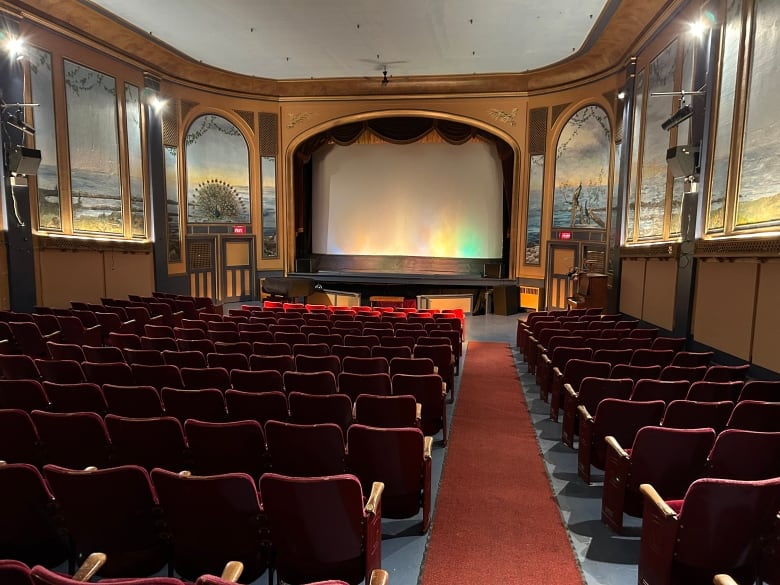From the forest murals on its wall to the classic ruby red seats, Powell River’s Patricia Theatre is steeped in local history.
The theatre, which opened in 1913 and moved to its current site in 1928, reflects what life was like in Powell River many decades ago – and that includes a history of segregation.
For Laura Wilson, the Patricia’s theatre manager, being honest about that history has led to open conversations and reconciliation efforts with the local Indigenous community.
Wilson spoke to CBC’s On The Island in a special live broadcast from the theatre to highlight its unique history and the changes that have been made.
This interview has been edited for length and clarity.
LISTEN | The Patricia Theatre’s manager Laura Wilson speaks about the history:
On The Island5:58History on film and in action – we broadcast for the Patricia Theatre in Powell River
Gregor Craigie spoke with Laura Wilson, the theatre manager of the Patricia theatre in Powell River.
What role has the theatre played in the community since it first opened?
On the heels of the mill town being created here in the traditional Tis’kwat village of the Tla’amin Nation, they were really striving to create some sort of entertainment for the mill workers.
So this was an important place for the community and sadly it was a place that highlighted the sort of segregation that was occurring throughout the country.
But throughout the years this has been the only theatre here in town. So as the town grew, it hung on and still is a centre for a lot of community building and connection.
Can you tell us about the history of segregation in the theatre?
This particular building, as many older theatres and auditoriums, has a balcony.
Up until the last couple of decades, there were maybe 25 seats up in the balcony — compared with 250 down in the auditorium — and there was a separate entrance you had to use to walk up the stairs to the second floor.
That was where the local nation was relegated. So, if there was not a seat up there, of those 25 seats, they were turned away, even if there were seats in the theatre.

What have reconciliation efforts looked like?
The Tla’amin Nation has been so generous with their time and information throughout the years. Not just when the qathet film society took over this building in October 2021, but with previous owners as well, who were looking to rectify what had happened.
We try to just stay connected and follow the lead of the nation, in terms of what will create a better relationship and run programming through them.
We have a new festival we launched last year called the qathet international film festival and that’s pretty exciting to just bring more diversity into programming with some guidance from the nation.
How would you describe the theatre’s situation now?
Since the non-profit qathet film society took over the theatre, we’ve been in a better position to chase grants and get money than the previous owners, who really had to battle keeping up a building that’s almost 100 years old.
This is obviously a place for the community in many ways.
Throughout the year, we get people stopping in saying they’ve heard of us and some people even say this is why they came to Powell River.



